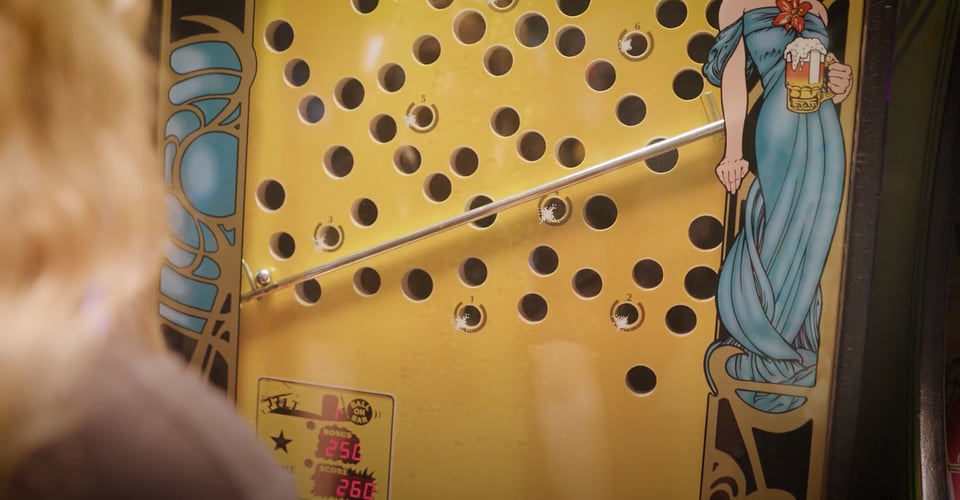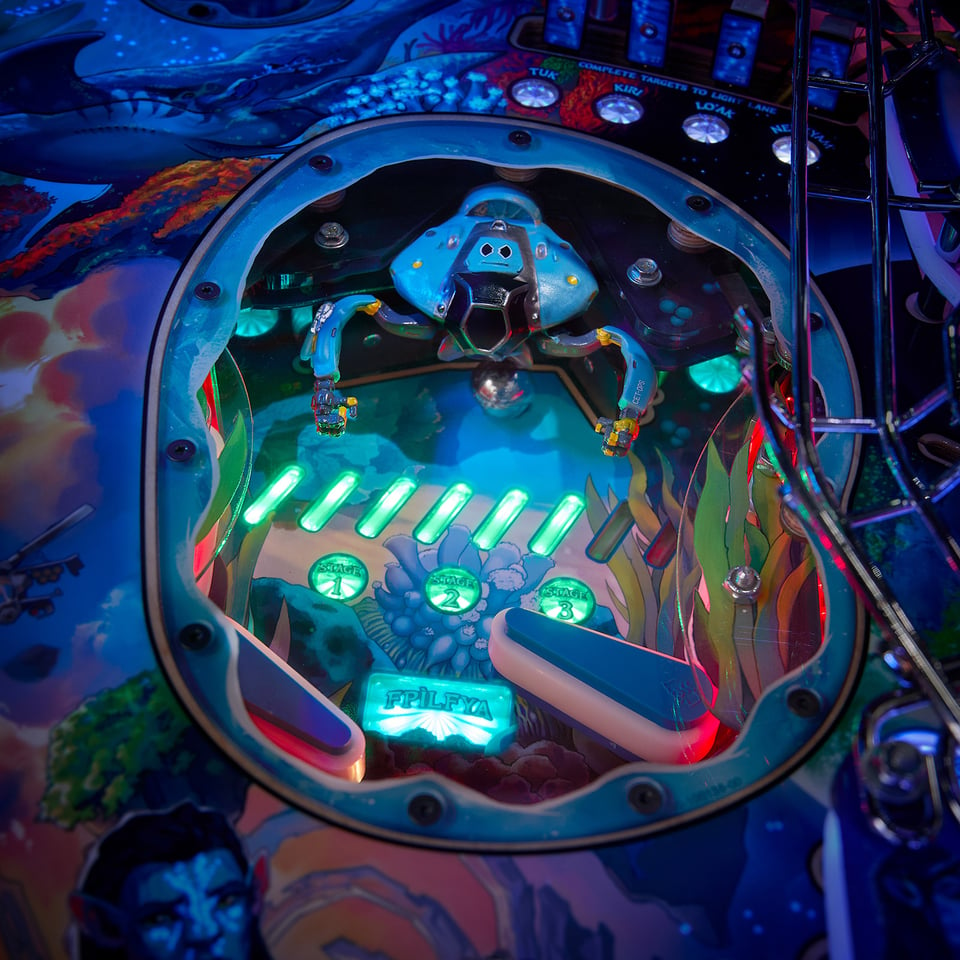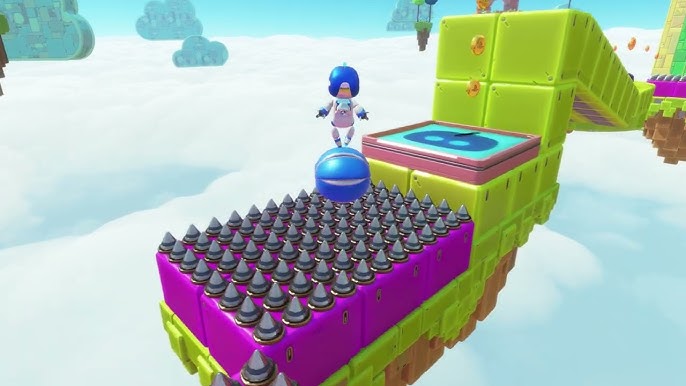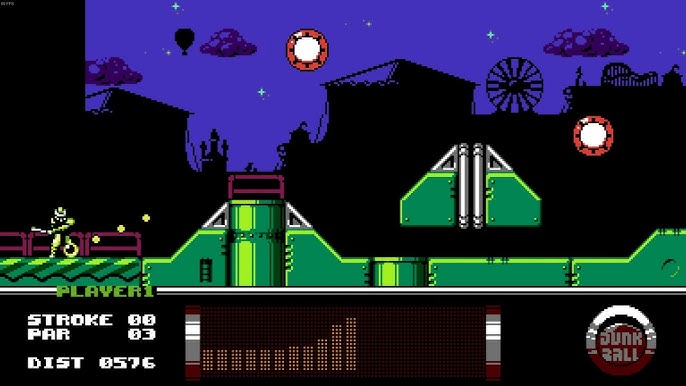#5: Balancing balls

Happy fall, sphere jugglers!
Over a century ago, penny arcades were all the rage. After the slot-machine was introduced in 1899, the invention of the coin operated device was luckily also used for affordable non-gambling entertainment. This manifested itself in the form of a variety of wondrous machines: fortune tellers, love testers, early (moving) image machinery, and, of course, variants of bagatelle, pinball’s ancestor.

Eventually, these completely mechanical devices became electro-mechanical and finally electronic and fully digital. Today, I want to talk to you about a pinball-like machine from the 1980s that was and still is a throwback to the days of the early arcades and can be seen as a bridge between eras.
IN THIS FIFTH EDITION:
Editorial: Ice Cold Beer - Balls be balanced!
News from the physical pinball world: Avatar and X-Men
Videoballs: Rolling around in Astro Bot
Flippin’ Arts: Flippaper
Videoballs: Bouncing about in UFO 50
From the archives: Blowing the dust out of the cartridge
EDITORIAL:
Ice Cold Beer - Balls be balanced!
I always liked those small marble maze handheld games as a kid where you could tilt a small playfield horizontally and vertically in order to navigate a little ball through a tiny maze and avoiding falling down in one of the many holes on the way to the finish line. Ice Cold Beer is the upright big sturdy arcade version of this type of game. Released in 1983 by Japanese videogame company Taito (of Space Invaders-fame), it’s a transitional game artefact between three different arcade eras: electro-mechanical, pinball and videogame.
Housed inside a cabinet with a modern arcade button and two joysticks, instead of a screen, Ice Cold Beer features a wooden playfield with little holes that looks a bit like an erected pinball playfield. On the bottom, you have a slim movable metal bar that you manipulate with the two joysticks that are placed underneath, on the left and right side of the cabinet.

The goal is now to balance the little ball on the bar towards a specific hole on the playfield that is currently lit. The easiest target is hole number 1, which is close to the starting position. Continuing upwards, the player has to navigate more and more distance with a rising number of distracting wrong holes that you mustn’t fall into. It’s a dead simple concept yet increasingly difficult the more holes you clear.
During a roadtrip through Québec and New Brunswick in summer, I came across an Ice Cold Beer machine in the wilds after many years of not having played it (in an arcade named Xeroz in Moncton). Enamoured by it for a long time, it was a thrilling experience to get my hands on this over 40 year old game again.
Meanwhile, in 2024, Ice Cool Beer is as contemporary as it can be. Five years ago, a digital recreation (along with many more levels) has been released for Windows/Steam under the family-friendly name of the game: Zeke’s Peak. Last year, a US company called Retro Arcade started doing faithful physical recreations of the original game. And since just a few months ago, there is a new Ice Cold Beer world champion who now reigns supreme in all different categories.
Surprisingly, there are few (video)games that continue to carry the ball balancing torch that Taito brought into the gaming world 40 years ago. There is one exception though which isn’t just visually stunning but also adds many neat additions to the basic concept: TumbleSeed, developed by a group of indie game designers and released in 2017 for Windows, Mac, Switch and PS4, enhances the game with a story, procedurally generated levels, quirky enemies, and a variety of obtainable upgrades for the ball — which, by the way, is depicted as a living seed.

Although the original arcade experience is the best way to play the game, the two digital recreations are also a lot of fun due to the precise way of controlling the ball with the left and right analogue stick of a gamepad. Ice Cold Beer remains one of the best pinball-likes out there — probably for another 40 years.
HEAVY MACHINES:
News from the physical pinball world: Avatar and X-Men
The world of physical pinball saw two major machine reveals in September! First off is Stern’s The Uncanny X-Men, which mostly tries to impress with unusual and fast shots through many ramps, lanes and orbits. It sure looks as overloaded as well as exciting. The most striking and unconventional design element is the mini play area right next to the two main flippers on the bottom left called The Danger Room. It features another smaller flipper and a loop shot. Although this looks cool, it remains to be seen if it’s more of a gimmicky thing or indeed a valuable new feature.

If you are now thinking: Haven’t there been many pinball tables with additional flippers in the past, then you would be right, of course. Though in the case of The Uncanny X-Men the respective Stern team is putting their bonus flipper right next to the main flippers, which can get distracting. Let’s see how it turns out. Oh, and if you also feel déjà-vu due to the name, you are, again, not mistaken. There has already been an X-Men pinball table, also from Stern, in 2012. But it seems like the world can never have enough Marvel themed things.
A whole different vibe is going on with the new table from Jersey Jack Pinball. Avatar: The Battle for Pandora has a beautiful artwork and an elaborate playfield laden with details. It features, for instance, a whimsical lower playfield with a robotic kraken and a stunning looking ultraviolet mode, similar to the Upside Down mode in Stranger Things. There is also a fun looking feature where you have to stack up combo shots by only using your left flipper.

As with the new X-Men, there has already been an Avatar pinball machine in 2010. It seems that within the pinball business you can’t afford to bet on more niche or even original themes for your designs anymore. Whatever the case, I’m looking forward to playing the new Avatar for sure. But as it’s often the case with Jersey Jack tables, they might deliver an amazing experience overall but sometimes fall short when it purely comes to gameplay and long-term motivation.
VIDEOBALLS:
Rolling around in Astro Bot
I had a very good time playing the new PS5 blockbuster platformer Astro Bot in September. Developer Team Asobi from Tokyo really outdid themselves this time with their funny robot mascot that started out as a modest sidekick over ten years ago. There is nothing really innovative going on here, but the game is so polished, full of ideas and fun to play that you don’t mind playing a game in 2024 that is basically Super Mario 64 from 1996 (only way better looking and using the features of a much more sophisticated game controller).
Astro Bot can’t just run, jump, punch and jetpack, but sometimes also has access to additional gear that can, for instance, transform him into a pinball. Funnily enough, there are even two different pinball modes in this game: There are levels where the character balances on rolled-up armadillos, and then there is the steel marble costume which transform the character itself into a ball.

The pinball gameplay doesn’t end here though as further into the game (beware, minor spoiler ahead) Astro even turns into a rolling LocoRoco. If you’re not familiar with this game, don’t be alarmed: It’s a smaller but very charming Playstation series that was first introduced almost 20 years ago. Astro Bot is a great game in itself but also a good reminder and motivator to check back with older ball rolling videogames from time to time.
FLIPPIN’ ARTS:
Flippaper
There have been several experiments with (digital) pinball creation tools in the past throughout the last four to five decades — but Flippaper is something quite different. Housed inside a very stylish looking white upright arcade cabinet, players can approach the machine, take one of the special big magic pens and then draw elements on a large sheet of paper that makes up the playfield. When you’re done, the Flippaper technology will recognize your drawn elements as obstacles. When you start to play a virtual game of pinball you are then playing your own creation.
The French art team who made this project in the middle of the 2010s was exhibiting their piece until at least only two years ago. I myself experienced Flippaper at the indie and art game festival A MAZE several years ago. If you happen to fall in love with this artwork, there is also the possibility to get your own machine made, though with an undisclosed and thereby probably very high pricetag. Luckily, a rental is also an option.
VIDEOBALLS:
Bouncing about in UFO 50
Another videogame I was very looking forward to that was finally released in mid-September is the amazing UFO 50 (for Windows on Steam). It can be described as the ultimate retro game project: A small team of developers created 50 (!) fully fleshed out retro-like games within the last eight years and then packed them into one single title. The lore behind UFO 50 is that it is assumed that there has been a (fictitious) videogame company in the 80s called UFO Soft which made all these games between 1982 and 1989. Now, a small team has rediscovered these almost forgotten and lost games and made them publically available and playable again.

Although clever and fun, you don’t really need to get into the made-up history arc wrapped around the astonishing package that is UFO 50. It’s enough to just be in awe about the sheer size and scope of this project and dive into the over four dozen games, one after another. There is not as much pinball-like stuff going on here as in Astro Bot although there is Pingolf (which isn’t the real-world pinball play mode with the same name where you try to use as few “shots”/balls as possible in order to achieve certain scores).
Pingolf is, as the name suggests, a hybrid between golf and pinball in a futuristic cyberpunk setting where you wield your club in order to fling a ball around 2D levels that look like they were created from the same team that did Pinball Dreams and Pinball Fantasies back in the early 1990s. Rad stuff!

FROM THE ARCHIVES:
Blowing the dust out of the cartridge
In the mid-2000s, when Youtube was in its infancy years, a young musician and fledgling content creator from the US started one of his first projects as a persona that looked like Super Mario without a shirt and called himself Gamejew. Gamejew talked about his passion for (specifically Nintendo) videogames and also wrote and performed a lot of songs about the then brand-new Wii console and different retro and contemporary games. Some years later, Jonathan Mann, the person behind it, would go on to different music and content creation projects and mostly became known for his song-a-day project which started in 2008 and is still going.
Back in 2006 and 2007, I was overly charmed by the Gamejew output and the sincere excitement for what videogames can bring to the world in terms of bonding on an emotional, social and communicative level. Of course, as you would correctly surmise at this point, Gamejew also sang a few songs about pinball and pinball-like games, mostly older classics. With these, I gently lead you out of this edition of The Ball is Wild 🪩 and hope to find you all well and ready for more pinball culture in October.
You’ve just read issue #5 of The Ball is Wild!
Want to comment on anything or let me know what you liked?
You can email me by just hitting reply, or reach out on Bluesky, Mastodon, or Instagram.
Back issues!
Issue #1: Let’s get this ball rolling (10 June 2024)
Issue #2: Examining the pinball (1 July 2024)
Issue #3: Machine manipulation (29 July 2024)
Issue #4: Pinball in the public (31 August 2024)
General information about this newsletter and the person behind it is available at the front page.
If you like this project, please recommend it to everyone who might be interested 🪩